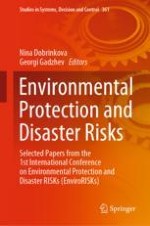This book presents research findings and conclusions that has been developed as algorithms or intelligent new methods solving problems in the fields of air pollution, climate and health, natural hazards and risks, water resources, human activities and management and informatics, remote sensing, high-performance computing and GIS for environmental monitoring and management.
Environmental protection and disaster risk topics are challenging fields, that scientific world is trying to address as much as it can. Earthquakes, floods, fires, droughts, blizzards, dust storms, natural releases of toxic gases and liquids, diseases and other environmental variations affect hundreds of millions of people each year. Many disaster events are triggered by human activities. Dealing with these problems will require systems thinking and integrating multidisciplinary science. Actions in these directions are taken more and more in the recent years by political bodies, NGOs and scientific groups trying to find sustainable solutions for the future generations. Every point of view matter when it comes to our global home – The Planet Earth.
